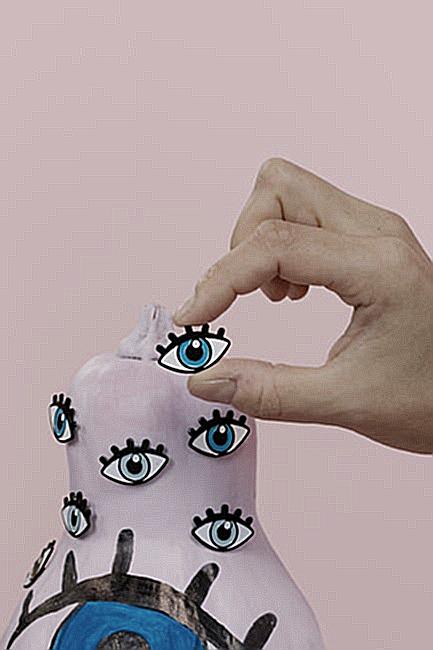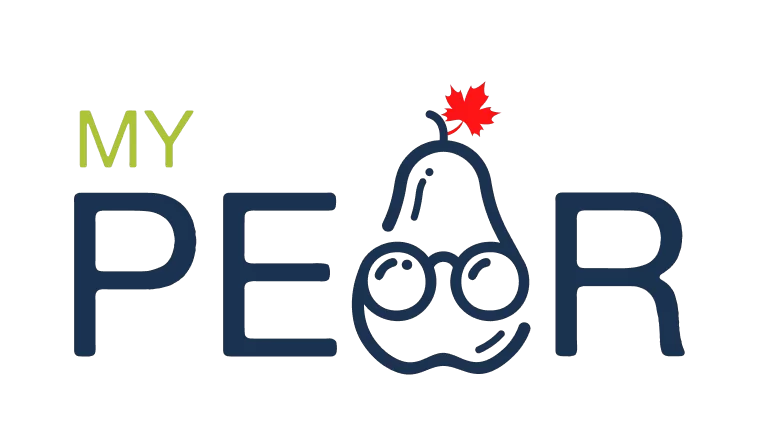Glaucoma is a devastating eye disease that affects millions of people worldwide. It is a condition that occurs when the optic nerve is damaged due to the increased pressure inside the eye. The rise in eye pressure is due to the accumulation of fluid within the eye. If left untreated, glaucoma can cause irreversible damage to the optic nerve, leading to vision loss and blindness.
One of the most effective treatments for glaucoma is the use of eye drops. These eye drops work by reducing the amount of fluid that the eye produces, thereby lowering the pressure inside the eye. Eye drops are one of the most commonly prescribed treatments for glaucoma and are available in various types.
One type of eye drop that is commonly prescribed for glaucoma is a prostaglandin analog. These eye drops work by increasing the outflow of fluid from the eye. They are usually administered once daily, in the evening, and are known to be highly effective in reducing eye pressure.
Another type of eye drop that is used to treat glaucoma is a beta-blocker. These eye drops work by reducing the production of fluid in the eye. They are usually given twice a day and are known to be highly effective in lowering eye pressure.
In conclusion, eye drops are an essential treatment option for glaucoma patients. They are highly effective in lowering eye pressure and preventing vision loss. Patients should always follow the instructions on the prescription label and use the eye drops as directed. It is also essential to have regular eye exams to monitor the progression of the disease and review treatment plans regularly with your eye doctor.
What Are The Best Eye Drops For Glaucoma?
Eye drops are a common medication for individuals suffering from glaucoma. They work by reducing the intraocular pressure (IOP) in patients affected by the disease. While there are various types of eye drops available for treating glaucoma, some are known to be more effective than others.
Beta-blockers such as Timolol, Levobunolol, and Betaxolol are popular types of eye drops used for glaucoma treatment. These drugs work by reducing the amount of fluid produced by the eye, thus lowering the intraocular pressure.
Prostaglandin analogues such as Latanoprost, Travoprost, and Bimatoprost are another common type of eye drops used in glaucoma treatment. They work by increasing the drainage of fluid from the eye, thus reducing the intraocular pressure. These are generally considered the best class of glaucoma eye drops due to their effectiveness and minimal side effects.
Combination eye drops such as Dorzolamide-Timolol, Brinzolamide-Timolol, and Brimonidine-Timolol are also commonly prescribed for glaucoma treatment.
It is important to note that the best eye drops for glaucoma will vary from patient to patient, depending on their specific case and medical history. It is essential to consult a professional ophthalmologist to determine the most suitable medication for the patient.
What Are The Side Effects Of Eye Drops For Glaucoma?
Like any medication, eye drops for glaucoma may have side effects. These side effects can vary depending on the type of eye drop used. Patients are advised to report any side effects to their ophthalmologist immediately.
The most common side effects of beta-blocker eye drops include eye irritation, stinging, and burning, dry eyes, low blood pressure, and decreased heart rate. In rare cases, patients may experience bronchospasms or worsening of existing lung conditions.
Prostaglandin analogue eye drops may cause side effects such as redness, itchy and swollen eyes, eyelash growth, darkening of the iris or eyelashes, and darkening of the skin around the eyes.
Combination eye drops may cause similar side effects as beta-blockers and prostaglandin analogues.
It is important to remember that not all patients experience side effects, and those that do often find them mild and manageable. Patients should consult with their ophthalmologist to discuss any concerns about potential side effects that may arise.
How Do Eye Drops Lower Intraocular Pressure?
A primary reason for the development of glaucoma is increased intraocular pressure (IOP). Eye drops work by reducing the amount of eye fluid or aqueous humor produced or by causing an increase in its draining capacity. This leads to a reduction in IOP.
Beta-blockers work by reducing the production of aqueous humor, leading to a decrease in IOP levels in the eye.
Prostaglandin Analogues, on the other hand, work by increasing the drainage of the eye fluid through the uveoscleral pathway, leading to a decrease in IOP levels.
Combination eye drops often contain a beta-blocker and a second medication, either a carbonic anhydrase inhibitor or an alpha-agonist. These medications work together to reduce eye fluid production and increase drainage of the fluid, leading to lowered IOP levels.
What Is The Main Goal Of Glaucoma Eye Drops?
The primary goal of glaucoma eye drops is to lower intraocular pressure (IOP) within the eye. High IOP is a key risk factor for glaucoma and is associated with damage to the optic nerve, which is responsible for transmitting images to the brain. Lowering IOP can often help slow or prevent further damage to the optic nerve and preserve a patient’s vision.
While reduced IOP is the main goal of glaucoma eye drops, other factors, such as medication tolerability, cost, frequency of administration, and potential side effects, are considered when determining which specific medication to use.
How Often Should You Use Eye Drops For Glaucoma?
The frequency of glaucoma eye drop administration can vary depending on the type of drug used and the severity of the patient’s glaucoma. Typically, eye drops for glaucoma are used once or twice daily to lower intraocular pressure. However, some patients may require more frequent administration or a combination of different types of eye drops.
It is essential to follow the ophthalmologist’s recommended administration protocol carefully, and to avoid missing any doses. It is recommended that patients keep a consistent schedule for administering their eye drops to ensure the greatest effectiveness.
Can Glaucoma Be Treated With Eye Drops?
Glaucoma can be treated with eye drops. Most cases of glaucoma are treated with prescription eye drops. However, in advanced stages of glaucoma, surgery may be necessary to prevent vision loss.
With proper use and follow-up, most glaucoma patients can successfully manage their condition with eye drops.
What Are Natural Remedies For Glaucoma?
While there are few natural remedies for glaucoma, certain lifestyle changes can help manage the disease. For instance, exercise, a healthy diet, and cessation of smoking may help reduce intraocular pressure.
It is essential to note, however, that natural remedies are not a substitute for doctor-prescribed medication. Patients should consult their ophthalmologist before making any dietary or lifestyle changes to manage their glaucoma.
What Is The Difference Between Beta Blockers And Prostaglandin Analogue Eye Drops?
Beta-blocker and Prostaglandin Analogue eye drops are both used to reduce intraocular pressure, but they work differently.
Beta-blockers decrease the production of aqueous humor in the eye, whereas Prostaglandin Analogue eye drops increase the outflow of aqueous humor from the eye. Beta-blockers tend to have fewer side effects, while prostaglandin analogues tend to be more effective at reducing intraocular pressure.

Patients with certain health conditions, such as asthma, may not be advised to use beta-blockers. Patients who do not tolerate one type of medication may find that another type is more effective or has fewer side effects.
What Happens If You Stop Using Glaucoma Eye Drops?
If a glaucoma patient stops using their prescribed eye drops, the intraocular pressure in their eye may increase, putting them at risk for optic nerve damage and further vision loss. It is essential to follow the ophthalmologist’s recommended administration protocol carefully and not discontinue the use of eye drops unless directed to do so.
How Do I Properly Use Eye Drops For Glaucoma?
Proper eye drop administration is essential to maximize the effectiveness of the medication. The following steps should be taken to properly administer eye drops for glaucoma:
1. Wash your hands thoroughly before using eye drops.
2. Tilt your head back slightly and look up.
3. Gently pull down the lower eyelid to create a small pouch.
4. Hold the eye drop bottle close to your eye, being careful not to touch your eyelid or eye.
5. Squeeze the bottle gently to deliver one drop into the eye.
6. Close your eyes and gently press on the inner corner of your eye near the bridge of your nose.
7. Keep your eyes closed for 2–3 minutes to ensure that the medication is absorbed.
It is crucial to follow the specific instructions provided by your ophthalmologist. They may customize either the number of drops per day or the method of administration, depending on your specific condition.
Can Eye Drops For Glaucoma Cause Headaches?

Eyedrops for glaucoma may cause headaches in some patients. This side effect is not common, but it can occur. Other potential side effects of glaucoma eye drops are eye redness or irritation, changes in vision, and stinging or burning sensations in the eye. If headaches or other side effects occur, patients should contact their ophthalmologist immediately.
Conclusion
In conclusion, eye drops are an effective treatment option for glaucoma, a serious eye disease that can lead to permanent vision loss if left untreated. The eye drops work by reducing the pressure inside the eye, which helps to slow the progression of the disease and preserve vision. It is essential to follow the prescribed dosage and administration instructions for the eye drops to achieve maximum benefits.

There are several types of eye drops available for treating glaucoma, including prostaglandin analogs, beta-blockers, alpha-adrenergic agonists, and carbonic anhydrase inhibitors. Each type of eye drop has its unique mechanism of action, advantages, and side effects.
It is crucial to inform your eye doctor if you experience any side effects, such as eye irritation or redness. Still, eye drops are generally safe and well-tolerated by most patients. Routine eye exams are necessary to monitor the effectiveness of the eye drops and make changes in the treatment plan if needed.
In summary, eye drops are a vital part of glaucoma treatment and can help prevent vision loss in patients with the disease. It is essential to use them as prescribed by your eye doctor and to inform them of any side effects or concerns. With proper treatment and regular monitoring, patients with glaucoma can maintain good vision and quality of life.
Beta-blockers such as Timolol, Levobunolol, and Betaxolol are popular types of eye drops used for glaucoma treatment. These drugs work by reducing the amount of fluid produced by the eye, thus lowering the intraocular pressure.
Prostaglandin analogues such as Latanoprost, Travoprost, and Bimatoprost are another common type of eye drops used in glaucoma treatment. They work by increasing the drainage of fluid from the eye, thus reducing the intraocular pressure. These are generally considered the best class of glaucoma eye drops due to their effectiveness and minimal side effects.
Combination eye drops such as Dorzolamide-Timolol, Brinzolamide-Timolol, and Brimonidine-Timolol are also commonly prescribed for glaucoma treatment.
It is important to note that the best eye drops for glaucoma will vary from patient to patient, depending on their specific case and medical history. It is essential to consult a professional ophthalmologist to determine the most suitable medication for the patient.
"}},{"@type": "Question", "name": "What Are The Side Effects Of Eye Drops For Glaucoma?","acceptedAnswer": {"@type": "Answer","text": "Like any medication, eye drops for glaucoma may have side effects. These side effects can vary depending on the type of eye drop used. Patients are advised to report any side effects to their ophthalmologist immediately.
The most common side effects of beta-blocker eye drops include eye irritation, stinging, and burning, dry eyes, low blood pressure, and decreased heart rate. In rare cases, patients may experience bronchospasms or worsening of existing lung conditions.
Prostaglandin analogue eye drops may cause side effects such as redness, itchy and swollen eyes, eyelash growth, darkening of the iris or eyelashes, and darkening of the skin around the eyes.
Combination eye drops may cause similar side effects as beta-blockers and prostaglandin analogues.
It is important to remember that not all patients experience side effects, and those that do often find them mild and manageable. Patients should consult with their ophthalmologist to discuss any concerns about potential side effects that may arise.
"}},{"@type": "Question", "name": "How Do Eye Drops Lower Intraocular Pressure?","acceptedAnswer": {"@type": "Answer","text": "A primary reason for the development of glaucoma is increased intraocular pressure (IOP). Eye drops work by reducing the amount of eye fluid or aqueous humor produced or by causing an increase in its draining capacity. This leads to a reduction in IOP.
Beta-blockers work by reducing the production of aqueous humor, leading to a decrease in IOP levels in the eye.
Prostaglandin Analogues, on the other hand, work by increasing the drainage of the eye fluid through the uveoscleral pathway, leading to a decrease in IOP levels.
Combination eye drops often contain a beta-blocker and a second medication, either a carbonic anhydrase inhibitor or an alpha-agonist. These medications work together to reduce eye fluid production and increase drainage of the fluid, leading to lowered IOP levels.
"}},{"@type": "Question", "name": "What Is The Main Goal Of Glaucoma Eye Drops?","acceptedAnswer": {"@type": "Answer","text": "
The primary goal of glaucoma eye drops is to lower intraocular pressure (IOP) within the eye. High IOP is a key risk factor for glaucoma and is associated with damage to the optic nerve, which is responsible for transmitting images to the brain. Lowering IOP can often help slow or prevent further damage to the optic nerve and preserve a patient's vision.
While reduced IOP is the main goal of glaucoma eye drops, other factors, such as medication tolerability, cost, frequency of administration, and potential side effects, are considered when determining which specific medication to use.
"}},{"@type": "Question", "name": "How Often Should You Use Eye Drops For Glaucoma?","acceptedAnswer": {"@type": "Answer","text": "The frequency of glaucoma eye drop administration can vary depending on the type of drug used and the severity of the patient's glaucoma. Typically, eye drops for glaucoma are used once or twice daily to lower intraocular pressure. However, some patients may require more frequent administration or a combination of different types of eye drops.
It is essential to follow the ophthalmologist's recommended administration protocol carefully, and to avoid missing any doses. It is recommended that patients keep a consistent schedule for administering their eye drops to ensure the greatest effectiveness.
"}},{"@type": "Question", "name": "Can Glaucoma Be Treated With Eye Drops?","acceptedAnswer": {"@type": "Answer","text": "Glaucoma can be treated with eye drops. Most cases of glaucoma are treated with prescription eye drops. However, in advanced stages of glaucoma, surgery may be necessary to prevent vision loss.
With proper use and follow-up, most glaucoma patients can successfully manage their condition with eye drops.
"}},{"@type": "Question", "name": "What Are Natural Remedies For Glaucoma?","acceptedAnswer": {"@type": "Answer","text": "While there are few natural remedies for glaucoma, certain lifestyle changes can help manage the disease. For instance, exercise, a healthy diet, and cessation of smoking may help reduce intraocular pressure.
It is essential to note, however, that natural remedies are not a substitute for doctor-prescribed medication. Patients should consult their ophthalmologist before making any dietary or lifestyle changes to manage their glaucoma.
"}},{"@type": "Question", "name": "What Is The Difference Between Beta Blockers And Prostaglandin Analogue Eye Drops?","acceptedAnswer": {"@type": "Answer","text": "Beta-blocker and Prostaglandin Analogue eye drops are both used to reduce intraocular pressure, but they work differently.
Beta-blockers decrease the production of aqueous humor in the eye, whereas Prostaglandin Analogue eye drops increase the outflow of aqueous humor from the eye. Beta-blockers tend to have fewer side effects, while prostaglandin analogues tend to be more effective at reducing intraocular pressure.
Patients with certain health conditions, such as asthma, may not be advised to use beta-blockers. Patients who do not tolerate one type of medication may find that another type is more effective or has fewer side effects.
"}},{"@type": "Question", "name": "What Happens If You Stop Using Glaucoma Eye Drops?","acceptedAnswer": {"@type": "Answer","text": "If a glaucoma patient stops using their prescribed eye drops, the intraocular pressure in their eye may increase, putting them at risk for optic nerve damage and further vision loss. It is essential to follow the ophthalmologist's recommended administration protocol carefully and not discontinue the use of eye drops unless directed to do so.
"}},{"@type": "Question", "name": "How Do I Properly Use Eye Drops For Glaucoma?","acceptedAnswer": {"@type": "Answer","text": "Proper eye drop administration is essential to maximize the effectiveness of the medication. The following steps should be taken to properly administer eye drops for glaucoma:
1. Wash your hands thoroughly before using eye drops. 2. Tilt your head back slightly and look up. 3. Gently pull down the lower eyelid to create a small pouch. 4. Hold the eye drop bottle close to your eye, being careful not to touch your eyelid or eye. 5. Squeeze the bottle gently to deliver one drop into the eye. 6. Close your eyes and gently press on the inner corner of your eye near the bridge of your nose. 7. Keep your eyes closed for 2–3 minutes to ensure that the medication is absorbed.
It is crucial to follow the specific instructions provided by your ophthalmologist. They may customize either the number of drops per day or the method of administration, depending on your specific condition.
"}},{"@type": "Question", "name": "Can Eye Drops For Glaucoma Cause Headaches?","acceptedAnswer": {"@type": "Answer","text": "
Eyedrops for glaucoma may cause headaches in some patients. This side effect is not common, but it can occur. Other potential side effects of glaucoma eye drops are eye redness or irritation, changes in vision, and stinging or burning sensations in the eye. If headaches or other side effects occur, patients should contact their ophthalmologist immediately.
"}},{"@type": "Question", "name": "Conclusion","acceptedAnswer": {"@type": "Answer","text": "In conclusion, eye drops are an effective treatment option for glaucoma, a serious eye disease that can lead to permanent vision loss if left untreated. The eye drops work by reducing the pressure inside the eye, which helps to slow the progression of the disease and preserve vision. It is essential to follow the prescribed dosage and administration instructions for the eye drops to achieve maximum benefits.
There are several types of eye drops available for treating glaucoma, including prostaglandin analogs, beta-blockers, alpha-adrenergic agonists, and carbonic anhydrase inhibitors. Each type of eye drop has its unique mechanism of action, advantages, and side effects.
It is crucial to inform your eye doctor if you experience any side effects, such as eye irritation or redness. Still, eye drops are generally safe and well-tolerated by most patients. Routine eye exams are necessary to monitor the effectiveness of the eye drops and make changes in the treatment plan if needed.
In summary, eye drops are a vital part of glaucoma treatment and can help prevent vision loss in patients with the disease. It is essential to use them as prescribed by your eye doctor and to inform them of any side effects or concerns. With proper treatment and regular monitoring, patients with glaucoma can maintain good vision and quality of life. "}}]}



